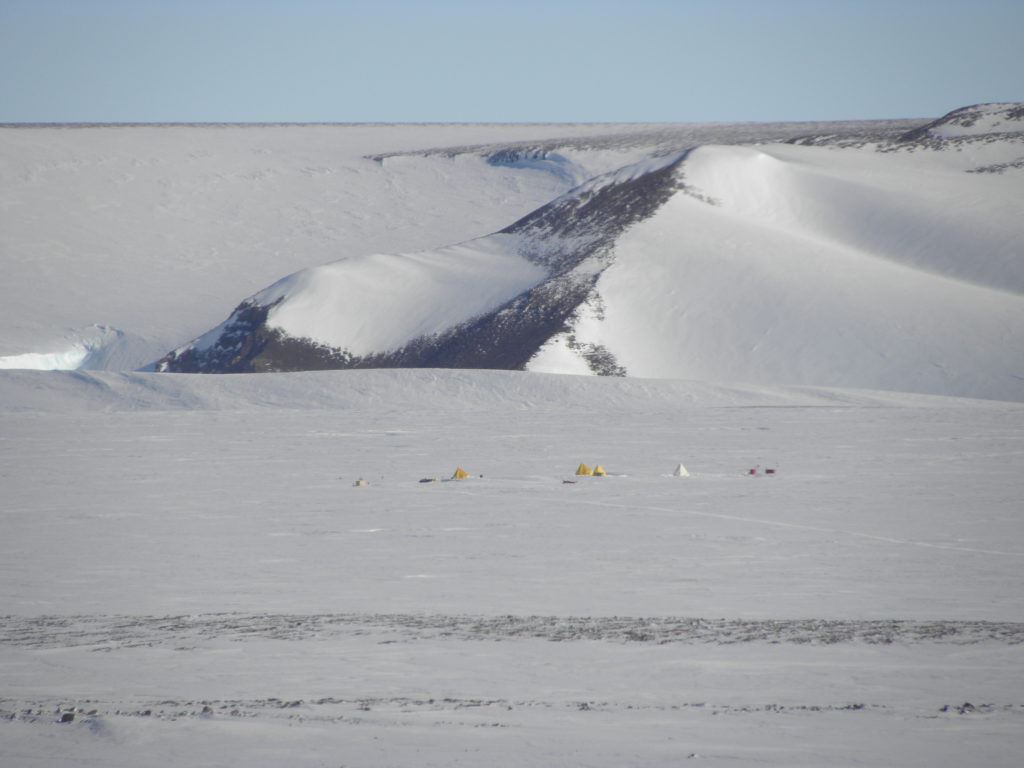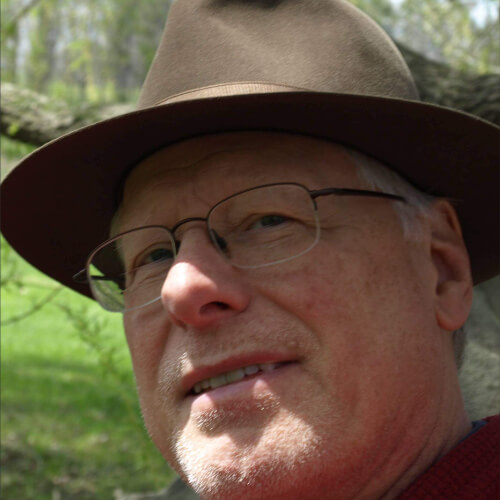
Climate change is. Nothing is static. Change is the only constant.
We all know, if we think about it, that at some point in our future the sun will go supernova and planet earth will be vaporized. Poof. This pale blue dot will be no more. And if humans happen to be around, we too will go poof.
Doing nothing. Or even going back to a low-tech Native American lifestyle, we will still vanish from existence as a species, along with every other life form on this planet, as well as this little ball of dirt and water that we call home.
We can’t stop our own extinction — because we can’t do anything about the sun.
I suppose that is why we dream of colonizing other planets. It’s our survival instinct at play.
Ever since human beings showed up, we’ve been altering the environment more than any other species. We are our own blessing and curse.
But when it comes to climate change, that existed long before we showed up on the scene, which was perhaps around 2 to 3 million years ago.
The Eocene epoch (56 to 33.9 million years ago) saw significant climate change.
The early Eocene was very warm, much warmer than it is today. There were very high levels of CO2 and methane in the atmosphere. And methane, by the way, is the more significant culprit when it comes to global warming. Some guesses go as high as several thousand ppm. However, the middle to late Eocene was marked by decreasing levels of CO2 and a switch from global warming to global cooling. Of note, during the period of cooling there was a temporary warming period of 600,000 years. We don’t really know why. Just as we don’t really know why the cooling trend began to begin with.
Global cooling accelerated dramatically after the Eocene-Oligocene Extinction Event, as CO2 levels rapidly fell.
The icing of Antarctica begin in the middle Eocene, and escalated during the Eocene-Oligocene Extinction Event — especially after CO2 levels dropped below the tipping point of 600 ppm.
Now notice, all of this climate change happened by the actions of Mother Nature alone. There were no human beings in existence at this time. And the kicker is, we don’t really have any idea as to what Mother Nature did or didn’t do to cause it. We’ve made a few guesses, but we know nothing concrete.
We currently live in an ice age. Surprised? You shouldn’t be. Our ice age began about 3 million years ago. Yep, that’s just about the time we humans got started too. About 11,000 years ago began the warm interglacial in which our modern world developed.
The Utah Geographical Society website has this bit of interesting info:
Do ice ages come and go slowly or rapidly?
Records show that ice ages typically develop slowly, whereas they end more abruptly. Glacials and interglacials within an ice age display this same trend.
On a shorter time scale, global temperatures fluctuate often and rapidly. Various records reveal numerous large, widespread, abrupt climate changes over the past 100,000 years. One of the more recent intriguing findings is the remarkable speed of these changes. Within the incredibly short time span (by geologic standards) of only a few decades or even a few years, global temperatures have fluctuated by as much as 15°F (8°C) or more.
For example, as Earth was emerging out of the last glacial cycle, the warming trend was interrupted 12,800 years ago when temperatures dropped dramatically in only several decades. A mere 1,300 years later, temperatures locally spiked as much as 20°F (11°C) within just several years. Sudden changes like this occurred at least 24 times during the past 100,000 years. In a relative sense, we are in a time of unusually stable temperatures today—how long will it last?
Glacials and interglacials occur in fairly regular repeated cycles. The timing is governed to a large degree by predictable cyclic changes in Earth’s orbit, which affect the amount of sunlight reaching different parts of Earth’s surface. The three orbital variations are: (1) changes in Earth’s orbit around the Sun (eccentricity), (2) shifts in the tilt of Earth’s axis (obliquity), and (3) the wobbling motion of Earth’s axis (precession).
Notice, ice ages happen because of the planet. Not because of what humans do.
During the Middle Ages, there was a warming period in Europe which enabled greater food production and population growth. Then we entered the Little Ice Age, which began in about the 1400s and ended in the late 1800s.
The causes of the Little Ice Age are guessed to be:
- cyclical lows in solar radiation
- heightened volcanic activity
- changes in ocean circulation
- variations in Earth’s orbit and axial tilt
- inherent variability in global climate
- decreases in human population
I find the last speculation of interest: large decreases in human population, particularly due to the Black Death and the colonization of the Americas, in which large numbers of native peoples died because of new diseases.
Perhaps the way to end global warming is to implement a large-scale version of Jonathan Swift’s Modest Proposal.
There is much concern over the warming of Antarctica. Land ice is decreasing in Western Antarctica, while sea ice is increasing in both East and West.
One of the guesses as to the trigger for the Little Ice Age was increased pack ice. Such as we are seeing today.
Another interesting factoid is the 2016-2018 Big Chill. NASA data shows global temperatures dropped by .56°C during that period. And the folks of the northern US can certainly attest to the brutal 2018-2019 winter. Is the Big Chill continuing?
So what is to be made of the warming and ice melt in western Antarctica, the relative stability of the East Antarctic ice sheet, and the general increase of sea ice?
It’s of significance that this same dynamic was in operation some 5 to 3 million years ago when there was a warm-up in the early Pliocene epoch, before we were once again plunged into the Big Chill.
There is climate change. No doubt about that. Is it largely caused by human activity? I think that point is debatable, when we look at the big picture. After all, one suggestion as to the cause of the Little Ice Age was the large and rapid decrease in human population essentially due to disease. No one has speculated it was due to falling CO2 content. Nor do we really know why we came out of the Little Ice Age. Greenhouse gases seemingly had nothing to do with it.
What I think is obvious is that climate change happened before people existed. And people do indeed alter their environment, often for the worse. In fact, we might garbage ourselves to death before global warming ever affects us.
The biggest problem we face, in my opinion, is not global warming but global consumerism. Consumerism uses up resources, generates pollution, and produces vast amounts of waste — much of it toxic, if not to us then to other life forms.
Perhaps we ought to worry more about our buying and spending habits and the junking up of the planet, then ice melting on Antarctica. But we’d rather look anywhere than our own backyards.
Comments are always welcome! And until next time, happy reading.
Share This!

No, Christopher, the recent Chinese SF movie WANDERING EARTH solves the Sun problem easily. Just attach huge thrusters to the Earth and push it away from the Sun. And there are no Americans involved, so we don’t even have to PAY for it!
Yippee! We wouldn’t have to pay for it! I’ll have to find that movie!
The latest science suggests that the sun lacks the mass to go supernova, but after about 5,000,000,000 years will begin to bloat into a red giant that will engulf the inner planets, including Earth. However, well before that, 5- to 600,000 years from now, the steady increase in heat and radiation will burn off first atmosphere then oceans, killing everything on the planet. As our astronomer friend David Lee Summers once told me, “Space is a scary place!” And brother, it doesn’t care!
So, yeah, human activity may or may not be affecting the cycle, but the cycle has been in play for millions of times longer than humans have been around, and my studied opinion is that we will be much more affected by them than any effect we may have on them.
Very thoughtful post this week. What got you spun up, anyway?
Exactly my point, Jack, even if I got a couple details wrong. Old man, old science. 😀 Eventually we’re all toast. No matter what we do or don’t do. Life here will cease. And Lovecraft essentially made the same point as David Lee Summers: Space is not our friend and it just doesn’t care.
I’m currently writing the 8th Pierce Mostyn book and it takes place in Antarctica. I’ve had a long term love affair with the icy continent and this post came out of my current reading on what we’ve discovered down there. There will be probably more to come!
Really, ol’ Pierce is headed south, eh? Look into (not necessarily buy) an old miniatures war game called Dystopian Wars; there’s a lot of material posted on line by enthusiasts. In it, antarctic explorers discover a sort of “vault” filled with advance technology, alien or ancient, they don’t know, in about 1800. While they’re debating how best to use the discovery to benefit mankind, their hidden bad guy steals samples and sells them to the highest bidders all over the world, changing history from that point forward. My old best mate turned me on to it; it’s pretty engaging stuff, and a great example of what can done with a continent that is, on the face of it, completely barren. Best of luck among the glaciers…
Thanks for the tip, Jack! I’ll check this out!